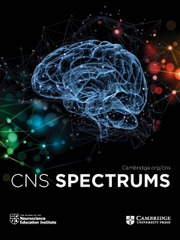No CrossRef data available.
Article contents
Abnormal neural activation during negative emotion processing in anxiety disorders: a coordinate-based meta-analysis
Published online by Cambridge University Press: 06 May 2024
Abstract
Anxiety disorders are associated with aberrant neural responses to negative emotions. Yet, the diverse range of contrasts and stimuli used to investigate these responses has produced variable, complex, and sometimes conflicting results.
To characterize brain activation during negative emotion processing in anxiety disorders, we conducted a meta-analysis of studies contrasting activation to negative stimuli versus perceptually similar neutral stimuli and examined the differential effects of two types of visual stimuli—scenes and faces. The relevant functional magnetic resonance imaging (fMRI) studies that employed these contrasts were identified using PubMed, Web of Science, and EMBASE databases, and the meta-analysis was conducted in accordance with Preferred Reporting Items for Systematic Reviews and Meta-Analyses (PRISMA) guidelines.
Across 20 studies, patients with anxiety disorders (n = 348) had increased activation in core cortical regions of default mode and frontal–parietal networks during negative emotion processing compared to healthy controls (n = 335). Further, differential and greater regional activation was found during the processing of negative scenes than faces and greater activation was associated with sex and age of patients across studies.
These results highlight the importance of self-reference- and cognitive regulation-related functional disturbances in the cortex rather than emotional response-related subcortical alteration during negative emotion processing and indicate a more robust effect from emotional scenes in anxiety disorders.
Information
- Type
- Original Research
- Information
- Copyright
- © The Author(s), 2025. Published by Cambridge University Press
Footnotes
R.W. and L.L. contributed equally.
Deceased.

